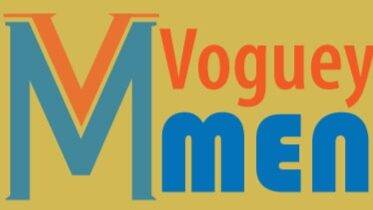The 1950s were anything but quiet. With the shadow of war lifting, the world stepped into a decade buzzing with optimism, affluence, and a fresh hunger for self-expression. The “Fabulous Fifties” (as they’re often fondly called) saw the loosening of fashion’s stiff upper lip. Rigid formality began to soften, giving rise to bold new looks that were once seen as rebellious — even scandalous. It was the era of the T-shirt revolution, the Beatnik’s black turtleneck, the Ivy League’s collegiate polish, and cowboy-infused Americana. Continental elegance bloomed from Paris to Milan, while Hollywood’s leading men set global trends on and off screen.
But fashion wasn’t just rewriting itself in the West. Across Latin America, the Arab world, and the Indian subcontinent, silver screen legends were dressing with conviction — fusing local heritage with modern glamour, inspiring millions and shaping regional ideals of masculinity. Whether they were crooners, rebels, poets, or perfectly tailored gentlemen, these 25 fashion icons of the 1950s from around the world didn’t just wear clothes — they reshaped how men dressed, and more importantly, how they saw themselves.
1. Cary Grant – The Tailored Perfectionist
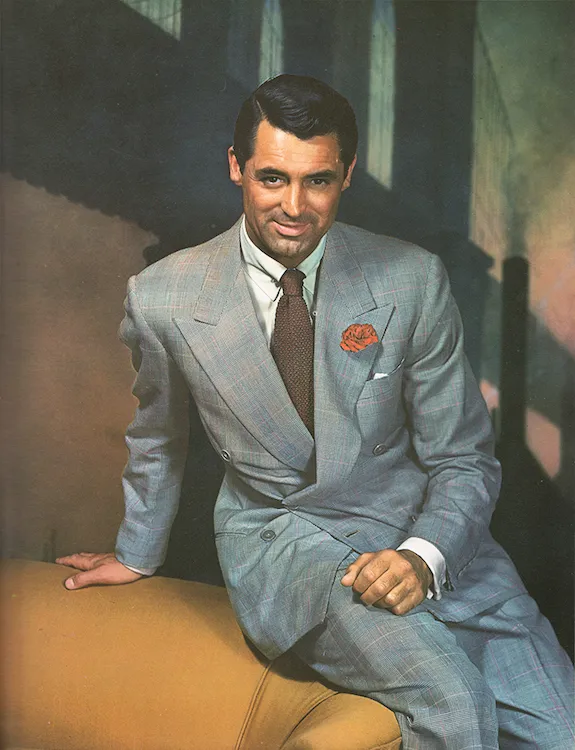
Few men have worn a suit with the grace and ease of Cary Grant. Whether in To Catch a Thief or North by Northwest, he was the embodiment of old-school Hollywood elegance — a man whose clothes never wore him. Grant championed sleek tailoring, subtle textures, and perfect fit. Even his casual wear — knit polos, ankle-grazing trousers, loafers — felt polished. Cary Grant’s (born Archibald Leach) influence lies in making refined menswear feel timeless rather than dated. From luxury brands to street style, his DNA is everywhere: in the perfectly cut blazer, the understated tie bar, the belief that style can be effortless if you’re self-assured.
2. James Dean – The Eternal Rebel in a T-Shirt
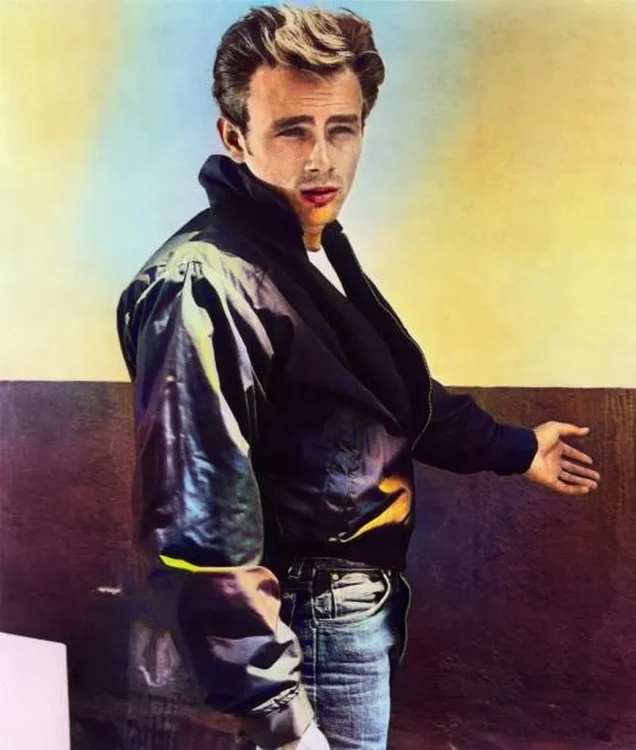
James Dean needed just three films to rewrite the rules of masculinity — and men’s fashion. In Rebel Without a Cause (1955), his white T-shirt, red windbreaker, and blue jeans formed a style blueprint for teenage defiance. Before Dean, the T-shirt was underwear; after Dean, it was an attitude. His nonchalant cool, tousled hair, and slouching stance made rebellion look heartbreakingly beautiful. He channeled vulnerability and rage into something uniquely wearable. From denim to leather jackets, every piece he wore became iconic — and remains so. Dean didn’t just start a trend; he invented youth culture’s uniform, and we’re still wearing it.
3. Marlon Brando – The Blueprint of Rugged Cool
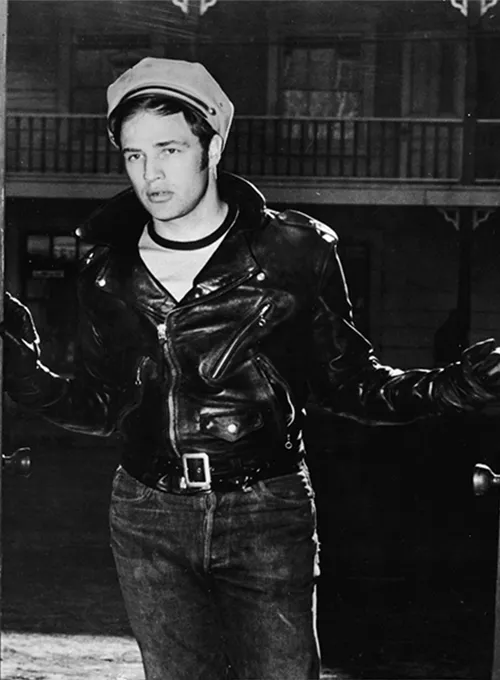
In A Streetcar Named Desire (1951), Marlon Brando made sweat-drenched sensuality part of fashion. Muscular, raw, and disheveled, he brought blue-collar masculinity to the big screen — and it was magnetic. Brando didn’t just wear T-shirts and leather jackets — he redefined how a man could wear them: clingy, worn-in, full of energy. His motorcycle boots, denim, and white tees became a wardrobe for working-class rebellion. More than a sex symbol, Brando was a turning point — he cracked open the polish of previous decades and introduced a gritty, hyper-masculine edge that still reverberates in everything from punk to streetwear. Image source
4. Elvis Presley – Flash, Swagger, and Rock ’n’ Roll
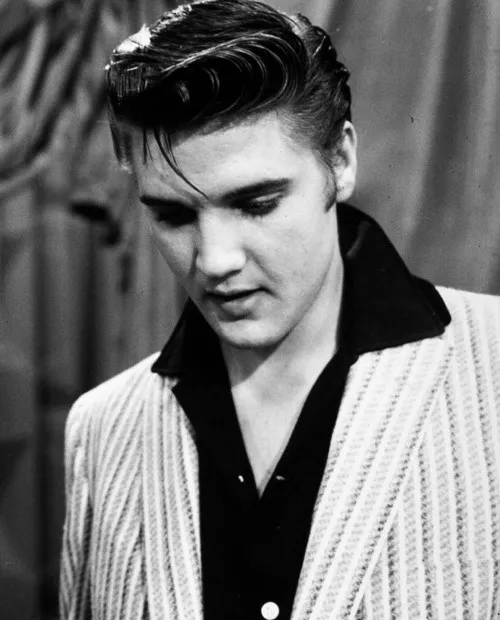
The moment Elvis stepped on stage in the mid-’50s, fashion got louder, tighter, and infinitely more fun. With his slick pompadour, high-waisted trousers, bold jackets, and classy suede shoes, Elvis redefined male flamboyance. He borrowed from Black musicians, country style, and Hollywood flair — and turned it all into rock ‘n’ roll chic. His look was unapologetically expressive, injecting color and sex appeal into the mainstream. Whether clad in a pink suit or a rhinestone jumpsuit, Elvis made it okay for men to be bold. Fashion stopped being background; it became performance — and Presley was its ultimate frontman.
5. Jean René Lacoste – The Father of Sporty Elegance
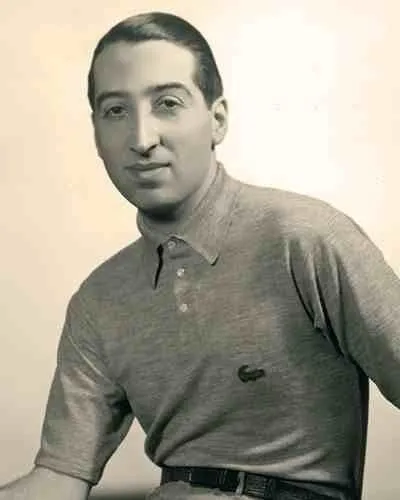
Before “athleisure” was a buzzword, Jean René Lacoste was revolutionizing men’s wardrobes with his polo shirt. The French tennis star turned designer in the early 1950s and brought with him the piqué cotton polo, embroidered with his now-iconic crocodile. Lacoste’s vision of elegance was rooted in ease and movement, blending sport with smart casual. He helped establish a new dress code: the off-duty gentleman. From golf courses to café terraces, his influence helped democratize fashion without diluting style. His legacy? Turning a functional sports shirt into a global icon of relaxed sophistication — one that still endures.
6. Pierre Cardin – The Futurist Who Dared First
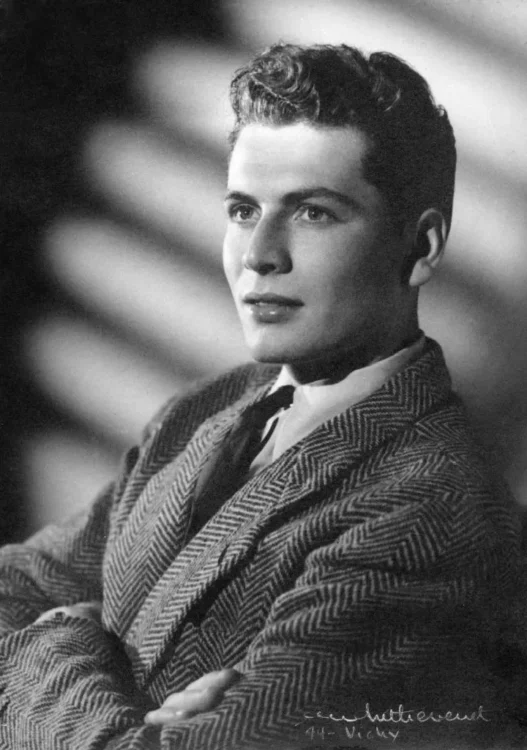
By the late 1950s, Pierre Cardin was already ahead of his time. In 1959, he became the first designer to present a full men’s runway show — shattering traditions with space-age tailoring, slim silhouettes, and bold geometry. Where others clung to classicism, Cardin imagined the future of menswear. He introduced high-buttoned jackets, modular suits, and abstract forms that rejected Savile Row conservatism. He also led the charge in ready-to-wear menswear, making designer fashion more accessible. His legacy is visible in every high-concept fashion show and every time a man wears something unexpected — and owns it.
7. Frank Sinatra – The Chairman of Cool
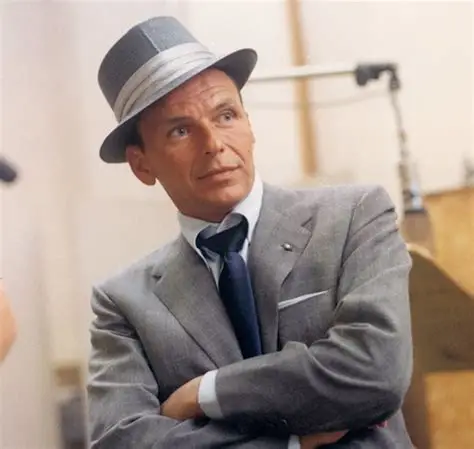
When Frank Sinatra walked into a room — fedora tipped, tie perfectly knotted — style came with him. A crooner, actor, and swaggering legend, Sinatra’s look was part Rat Pack bravado, part Hoboken street smarts. He popularized the skinny tie, sharp-shouldered suits, and two-tone shoes, and always looked as though he’d just stepped out of a noir film. His image was meticulous, but never stiff — he made style look like second nature. Sinatra taught men how to be flashy without being garish, classy without being boring. He wasn’t just dressed — he was dressed to kill.
8. Hubert de Givenchy – The Architect of Quiet Luxury
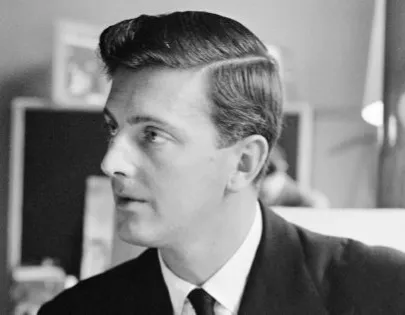
Though famed for dressing Audrey Hepburn, Hubert de Givenchy quietly shaped men’s high fashion too. With clean lines, luxurious fabrics, and restrained palettes, he introduced a minimalist French elegance to male wardrobes. In the 1950s, Givenchy’s menswear was about subtle authority — nothing screamed, everything whispered. He understood that real luxury wasn’t ostentatious; it was in how something felt, how it fit, how it moved. For the refined man who didn’t need flash, Givenchy’s clothes were a sanctuary of taste. His work laid the groundwork for today’s quiet luxury movement.
9. Yves Montand – The French Worker-Poet Aesthetic
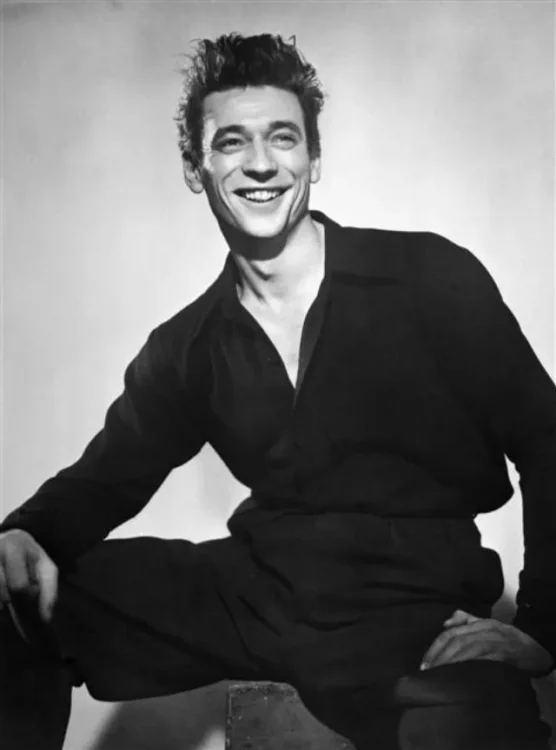
Yves Montand wore his politics and his fashion on his sleeve — often rolled up. A singer, actor, and beloved French everyman, Montand’s style blended working-class ruggedness with intellectual charm. Think: rolled-up sleeves, unstructured jackets, scarves slung carelessly, and a cigarette in hand. His look was soulful and accessible — the kind of man who could dance with a factory girl or dine with Simone Signoret. He embodied a relaxed, romantic masculinity, the precursor to today’s “soft power” style icons. Montand made French casual cool long before it was a brand.
10. Gregory Peck – The Gentleman Ideal
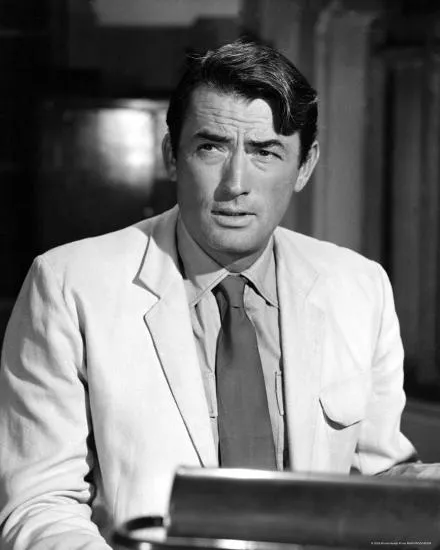
In every role — from Roman Holiday to To Kill a Mockingbird — Gregory Peck was the picture of moral clarity and tailored grace. His fashion was classic American Ivy: three-piece suits, crisp white shirts, trench coats, and thick-rimmed glasses. He gave menswear a sense of integrity, dignity, and quiet authority. His influence helped solidify the East Coast academic look as aspirational, timeless, and masculine. In a decade that flirted with rebellion, Peck reminded the world that tradition — when worn with confidence — still had power.
11. Jack Kerouac – The Beatnik Who Made Blue-Collar Cool
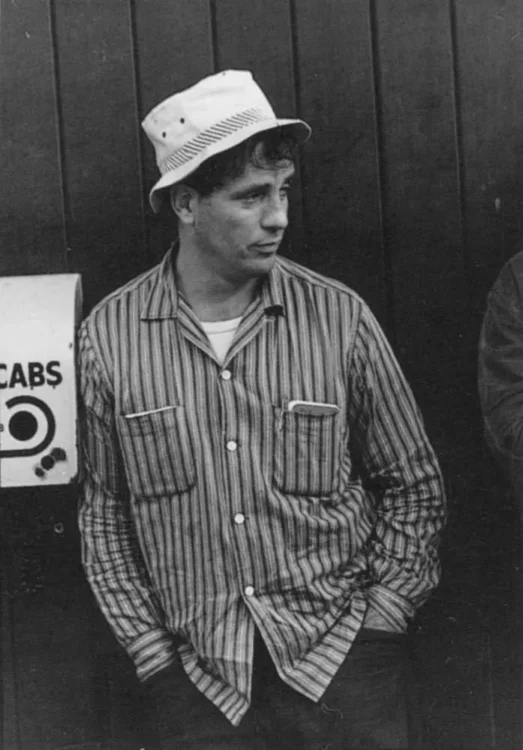
Before normcore, before workwear fashion weeks, there was Jack Kerouac — the restless Beat poet who turned plaid shirts, denim, and work boots into a countercultural uniform. In On the Road (1957), Kerouac not only chronicled a generation but dressed it: blue jeans, white T-shirts, flannel jackets, and worn-in boots. His aesthetic rejected polish and embraced grit — clothes for hitchhiking, jazz clubs, and existential angst. British GQ rightly credited him as the originator of blue-collar cool. His legacy lives on in every man who puts on a denim jacket not for the trend — but for the freedom it represents.
12. Jean Marais – The Sculpted Surrealist
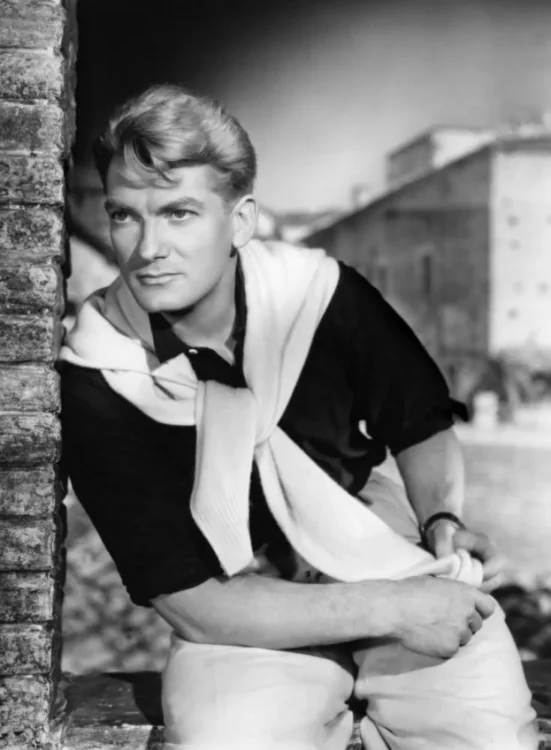
A muse to Jean Cocteau (One of the greatest avant garde French artists and playwright of the 20th century) and a star of French mythological cinema, Jean Marais brought an otherworldly elegance to the 1950s. His fashion leaned artistic: fitted knits, sweeping coats, and high-necked collars that mirrored his classical beauty. He often blurred lines between costume and couture, especially in films like Orpheus (1950), where his appearance was as sculptural as his performances. Off-screen, he dressed with poise and flair, helping define a more theatrical, refined masculinity in post-war France. Marais is on this list because his style was unapologetically expressive — proof that fashion could be high art without losing its soul.
13. Horst Buchholz – Germany’s Answer to James Dean
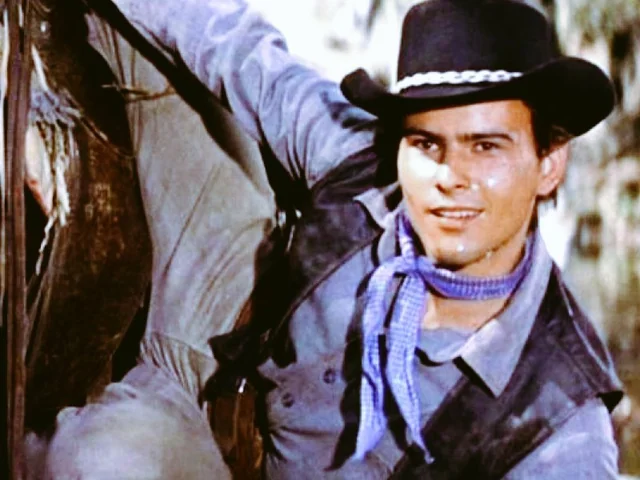
In post-war Germany, Horst Buchholz ignited the screen with smoldering youth in Die Halbstarken (1956), donning leather jackets, jeans, and defiant slouches. His look captured the German teenager’s yearning for rebellion and identity — a beacon of style in a country still redefining itself. While not globally dominant, Buchholz was a regional icon of ‘50s youth culture, influencing thousands of young men across Europe to ditch uniforms for individuality. His impact was less about global trends and more about opening the door for rebellion to wear its heart — and hair — on its sleeve.
14. Liberace – Maestro of Flamboyance and Extravagance
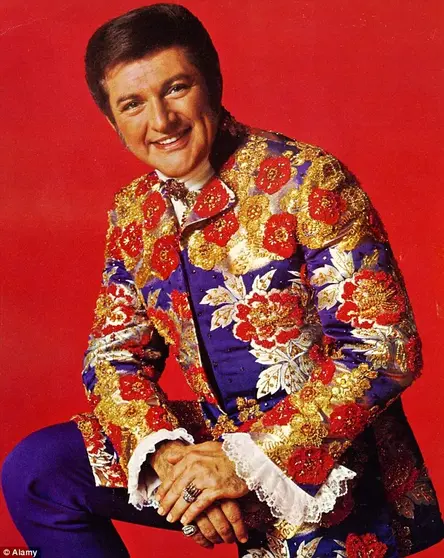
Władziu Valentino Liberace, known simply as Liberace, was the highest-paid entertainer of the 1950s and a pianist who turned classical performance into dazzling pop spectacle. With sold-out shows, a hit TV series, and Vegas residencies, his stardom rivaled Hollywood’s biggest names. But it was his fashion that stole the show: rhinestone tuxedos, fur capes, candelabra-laden pianos, and diamond rings on every finger. Long before glam rock existed, Liberace made flamboyance a signature. He didn’t just wear extravagance—he performed it, brilliantly and unapologetically.
15. Little Richard – The King of Flamboyance
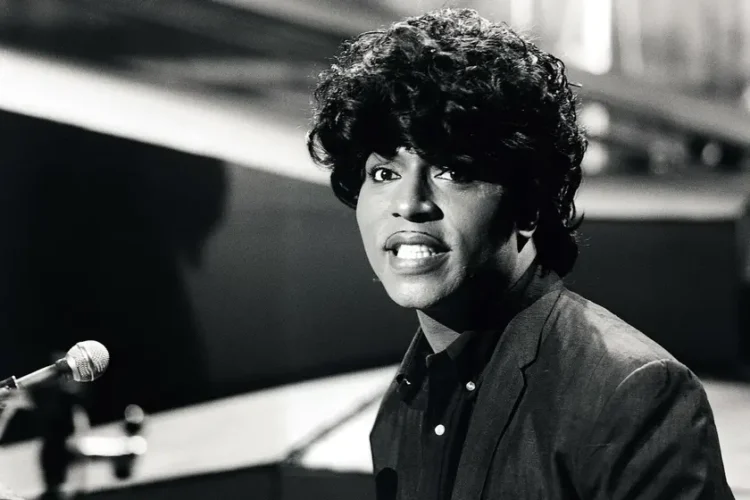
Few men have had the guts — or glitter — of Little Richard. With his sequined suits, pencil moustache, silk shirts, and mile-high pompadour, he made the gender-bending, show-stopping style of rock ‘n’ roll impossible to ignore. While his influence was more deeply felt in the ‘60s glam and funk scenes, it was in the ’50s that he laid the blueprint for performance fashion. Richard proved that fashion could be loud, joyful, and deeply personal. His inclusion here is essential — not because he followed trends, but because he obliterated boundaries and made fashion into pure electric spectacle.
16. John Wayne – The Original Americana Tough Guy
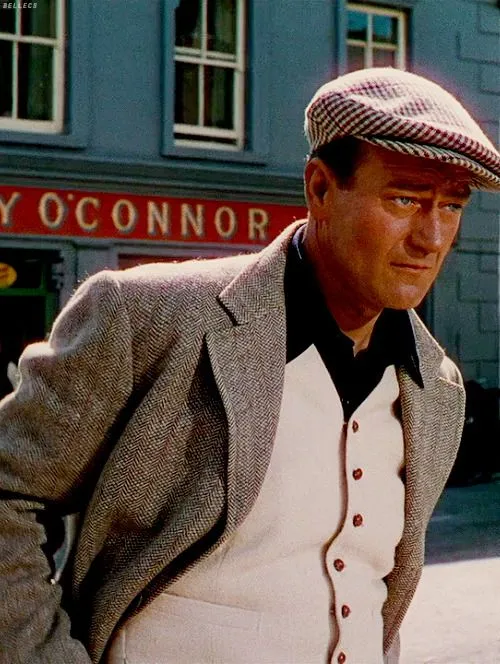
Though his acting style was straightforward, John Wayne’s fashion influence was anything but plain. He brought the rugged cowboy aesthetic into American popular consciousness — and kept it there. Wide-brimmed Stetsons, denim, flannel, leather vests, and dusty boots became synonymous with his stoic persona. Films like Hondo and The Searchers immortalized the look. Wayne wasn’t flashy, but he embodied a type of masculinity that men across generations emulated: quiet, tough, and self-sufficient. Today’s Americana resurgence — from Levi’s to workwear revival — still owes something to Duke. His wardrobe whispered, “Don’t mess with me,” and it’s still being echoed.
17. Tommy Steele – Britain’s First Teen Idol
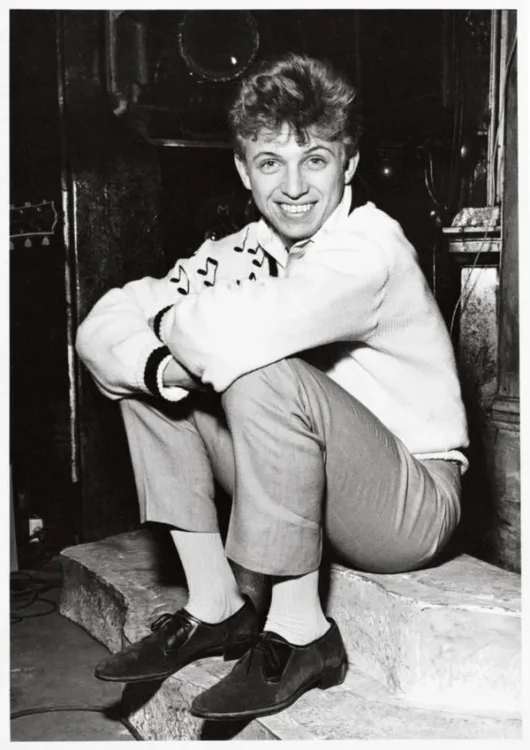
Before The Beatles, there was Tommy Steele — a cheeky, guitar-slinging lad from Bermondsey who gave post-war Britain its first homegrown rock ‘n’ roll heartthrob. More importantly, Steele gave a face and voice to the Teddy Boy look: drape jackets, creepers, slicked hair, and attitude. He wasn’t just performing — he was living the style, helping legitimize a working-class youth movement that valued fashion as identity. His influence was regional, yes, but crucial. Steele helped make British teenage rebellion look sharp, not scruffy, paving the way for the next decade’s musical and sartorial revolutions.
18. Tony Curtis – The Silver Screen’s Dashing Daredevil
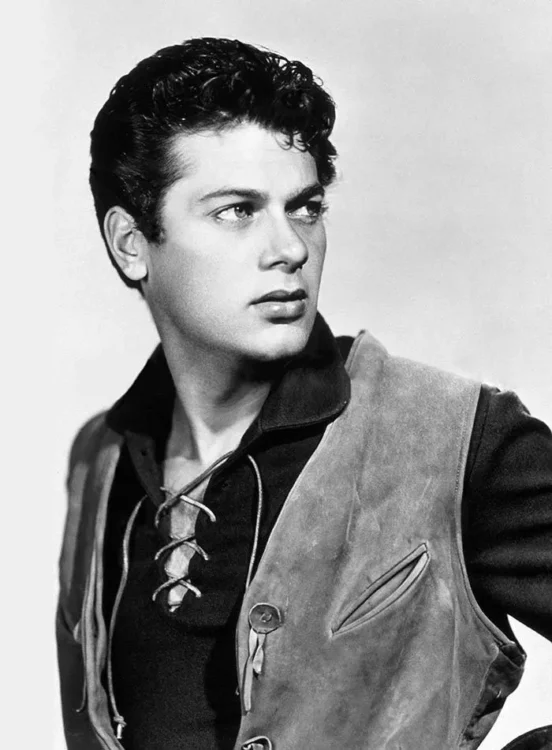
With matinee idol looks and a New York swagger, Tony Curtis brought serious razzmatazz to 1950s Hollywood. Whether in a slick suit or a sailor’s uniform, Curtis exuded charm, charisma, and a kind of bad-boy polish that made fans swoon. His role in Sweet Smell of Success (1957) as the ambitious press agent Sidney Falco remains one of the decade’s most electrifying performances. Off-screen, his style blended Italian tailoring with rebel flair — cuffed trousers, snug sweaters, and jet-black pompadour always in place. Tony wasn’t just stylish — he was sensational, proving that a little razzle-dazzle goes a long way in making an icon.
19. Pedro Infante – The Golden Charro of Mexico
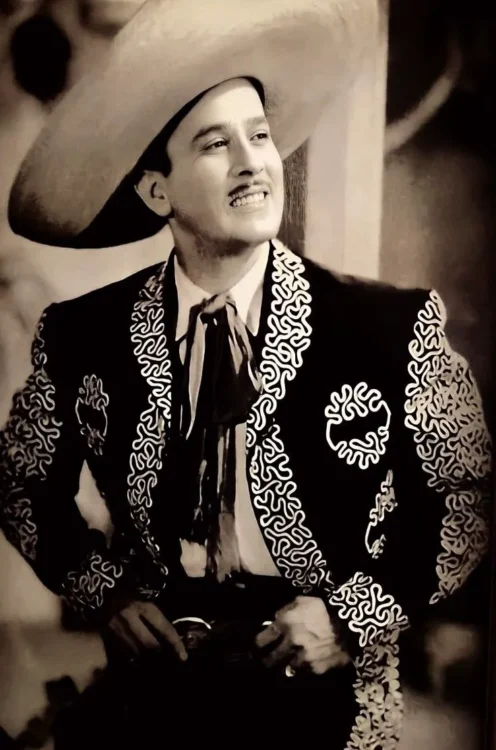
To Mexico, Pedro Infante wasn’t just a matinee idol — he was the soul of a generation. The leading man of the Época de Oro (Golden Age of Mexican Cinema), Infante starred in over 60 films during the ’40s and ’50s, singing ballads in one breath and breaking hearts in the next. But beyond his voice and acting, he was a fashion emblem of national pride. In his iconic charro suits, embroidered with silver, paired with bold neckerchiefs and a wide-brimmed sombrero, he made traditional Mexican dress look cinematic and contemporary. Off-screen, he was equally polished — favoring sharp double-breasted suits, high-waisted trousers, and side-parted hair. Infante gave fashion a cultural heartbeat, and to this day, he remains a style saint for millions — masculine, emotive, and gloriously Mexican.
20. Dilip Kumar – The Subcontinent’s Tragedy King in a Three-Piece Suit
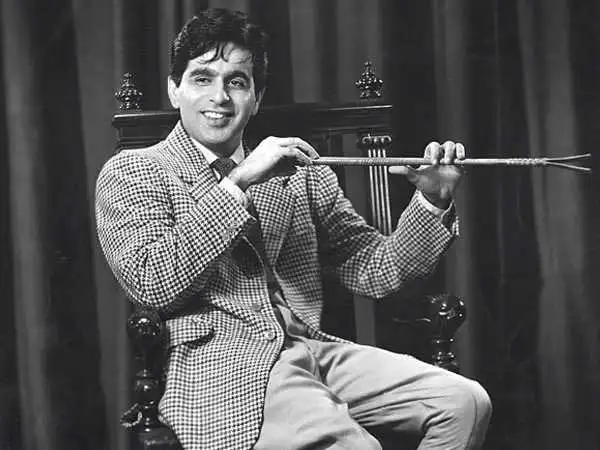
Few actors commanded the screen with such quiet authority as Dilip Kumar, Bollywood’s first true method actor and the original “Tragedy King.” But his impact didn’t end with cinema — it spilled into the wardrobes of millions across India and Pakistan. With his poised demeanor, side-swept hair, and flawlessly tailored suits, Dilip Kumar brought a gentlemanly elegance to South Asian masculinity. Whether brooding in Devdas or restrained in Madhumati, his aesthetic was always composed — a mix of post-colonial refinement and poetic melancholy. His off-screen style leaned British-inspired: wool coats, cufflinks, crisp collars. He wasn’t flashy — but he made subtlety magnetic. In a newly independent nation, he symbolized grace, intellect, and emotional depth, wrapped in gabardine and quiet confidence.
21. Roushdy Abaza – The Egyptian Panther of Sophistication
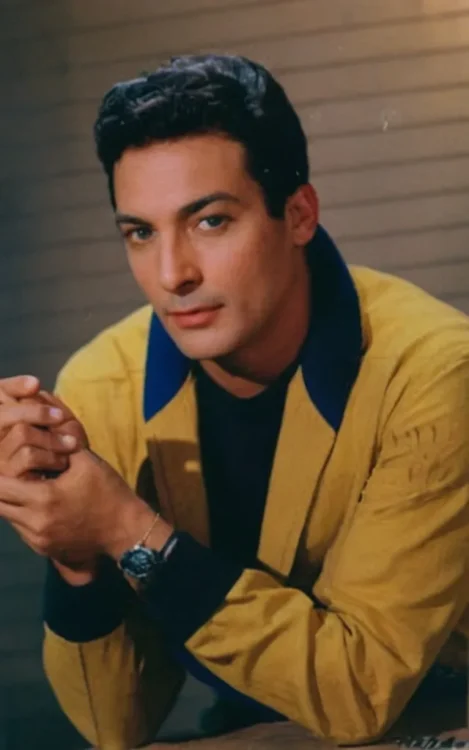
If Cairo had a James Bond in the 1950s, Roushdy Abaza was it. Effortlessly smooth, with hypnotic eyes and a deep voice that could lull or command, Abaza ruled Egyptian cinema’s golden era — and did it all in tailored double-breasted suits, pocket squares, and patent leather shoes. Whether on-screen in Tamr Henna or at an upscale Alexandria soirée, he oozed Mediterranean cool, often pairing Italian-style suiting with North African swagger. His style was masculine, debonair, and always camera-ready. More than an actor, he was a cultural connector — merging Cairo’s cosmopolitan buzz with classical Arab charm. For many across the Arab world, he remains the blueprint of cultivated masculinity, decades before Instagram had a word for it.
22. Roy Rogers – Rhinestone Cowboy Supreme
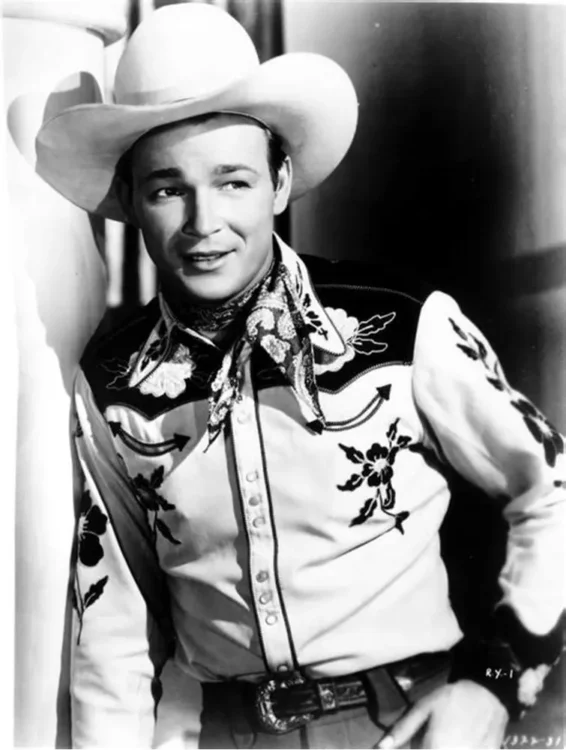
Roy Rogers didn’t just wear the West—he was the West. With his pearl-snap shirts, embroidered yokes, and rhinestone-studded suits, he turned cowboy couture into full-blown razzmatazz. The King of the Cowboys wasn’t just a box-office hero or radio legend; he was a walking, singing fashion statement. Always topped with a crisp white Stetson, Rogers brought polish and panache to rugged frontier wear. In an era of suits and ties, he dared to sparkle—and made the wild, wild West look downright glamorous.
23. Rock Hudson – Hollywood’s Towering Elegance
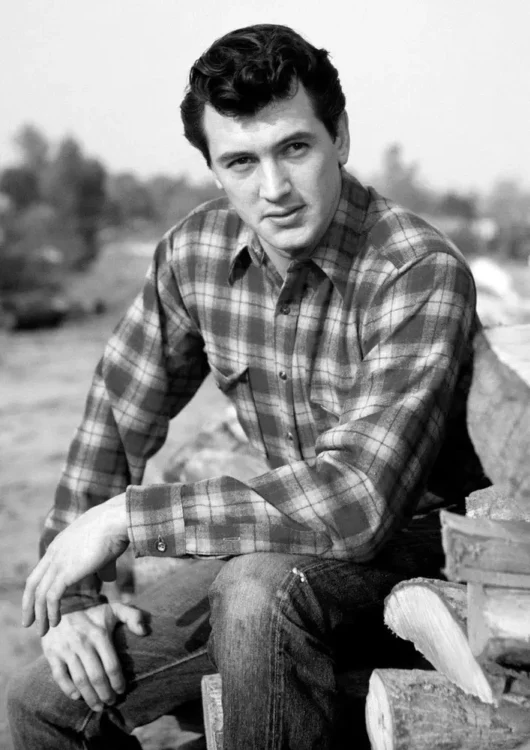
With his matinee-idol good looks and six-foot-four frame, Rock Hudson was the very definition of classic cool. Off-screen, his style was understated but undeniably refined: sleek suits, open-collar shirts, and a smile that could sell a thousand Brylcreem ads. On-screen, he ruled 1950s romance in hits like Magnificent Obsession, his quiet confidence anchoring every frame. Hudson’s fashion legacy lies in his effortless masculinity—never too flashy, always composed, and eternally camera-ready. He proved that true heartthrobs don’t chase trends; they set them.
24. Ricky Nelson – The Teen Idol in Ivy
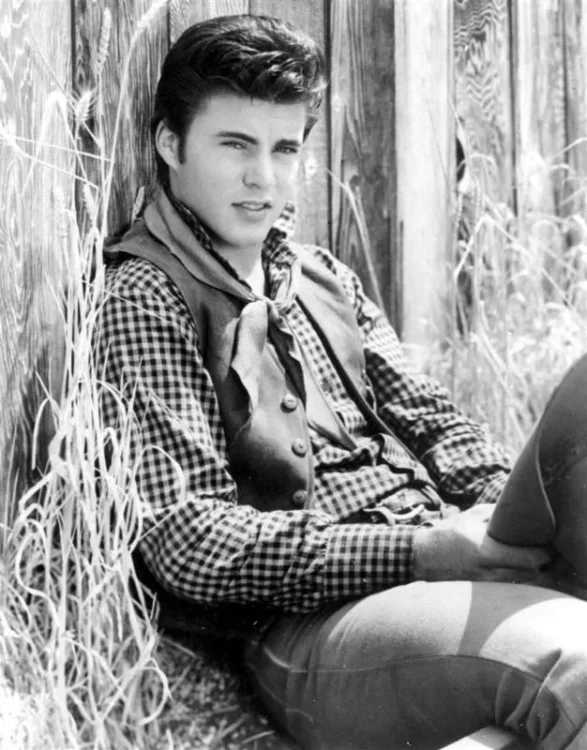
A poster boy for clean-cut cool, Ricky Nelson was every American teenager’s dream—and their parents’ too. On The Adventures of Ozzie and Harriet, he sang with charm and dressed with crisp precision: button-downs, letterman jackets, chinos, and that just-right pompadour. His 1957 hit “Be-Bop Baby” launched his rock & roll stardom, but it was his all-American Ivy League flair that sealed his fashion status. Ricky made safe look stylish, and in a decade teeming with rebels, he reminded everyone that wholesome could still be wildly cool.
25. Dirk Bogarde – Britain’s Sartorial Romantic
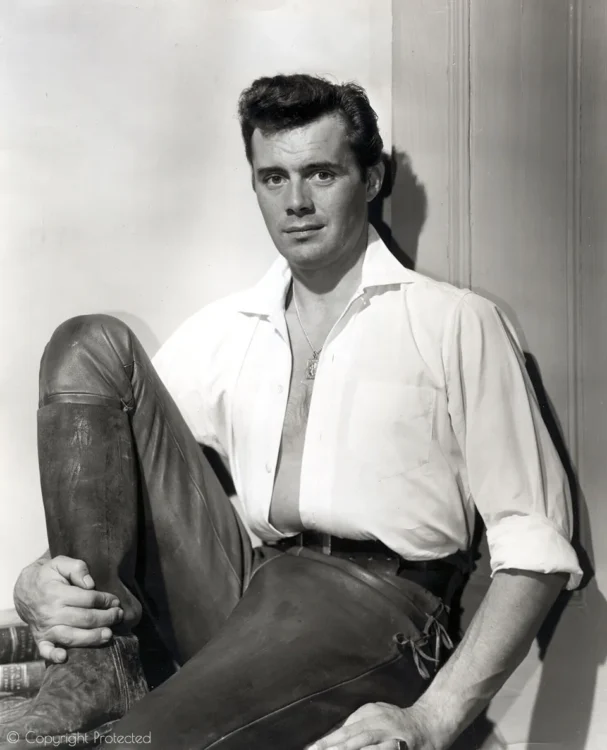
Dirk Bogarde wasn’t just a star—he was a British institution, pairing Oxford charm with continental sophistication. From his breakout role in Doctor in the House (1954) to his brooding roles later in the decade, he dressed with quiet elegance: narrow ties, slim tailoring, and a hint of European flair. Bogarde’s style mirrored his screen persona—thoughtful, intense, and always composed. With high cheekbones and higher standards, he brought intellectual edge to male fashion in postwar Britain. A master of restraint, Bogarde made minimalism magnetic.
Final thoughts:
The 1950s didn’t just introduce new styles — it introduced new identities. These 17 icons didn’t follow fashion; they defined it, each in their own distinct way. From tailored grace to rebel grit, from the café steps of Paris to neon-lit stages in Memphis, their wardrobes spoke volumes. And decades later, we’re still stealing from them. Because great style — like great stories — doesn’t age. It lingers, inspires, and occasionally struts right back into fashion.
